Sumin Han
Spatio-Temporal Road Traffic Prediction using Real-time Regional Knowledge
Aug 23, 2024Abstract:For traffic prediction in transportation services such as car-sharing and ride-hailing, mid-term road traffic prediction (within a few hours) is considered essential. However, the existing road-level traffic prediction has mainly studied how significantly micro traffic events propagate to the adjacent roads in terms of short-term prediction. On the other hand, recent attempts have been made to incorporate regional knowledge such as POIs, road characteristics, and real-time social events to help traffic prediction. However, these studies lack in understandings of different modalities of road-level and region-level spatio-temporal correlations and how to combine such knowledge. This paper proposes a novel method that embeds real-time region-level knowledge using POIs, satellite images, and real-time LTE access traces via a regional spatio-temporal module that consists of dynamic convolution and temporal attention, and conducts bipartite spatial transform attention to convert into road-level knowledge. Then the model ingests this embedded knowledge into a road-level attention-based prediction model. Experimental results on real-world road traffic prediction show that our model outperforms the baselines.
Multiple Areal Feature Aware Transportation Demand Prediction
Aug 23, 2024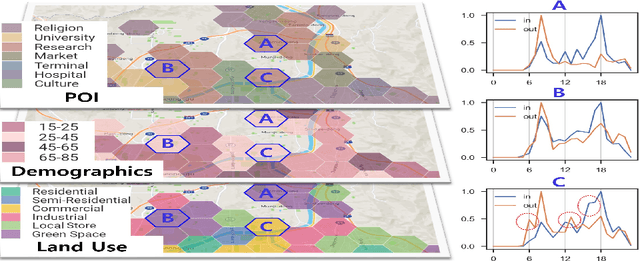
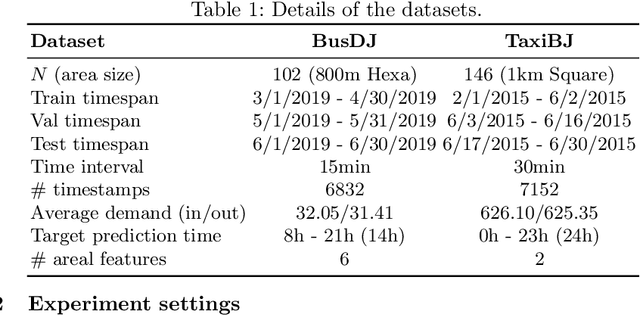
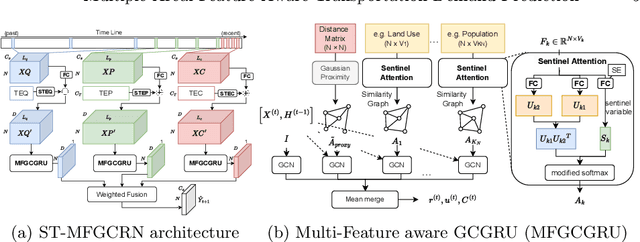
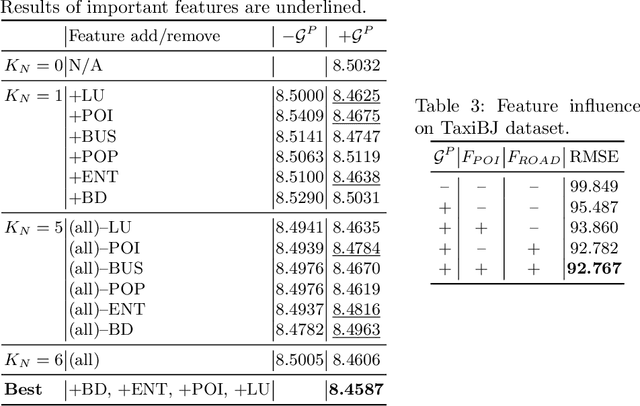
Abstract:A reliable short-term transportation demand prediction supports the authorities in improving the capability of systems by optimizing schedules, adjusting fleet sizes, and generating new transit networks. A handful of research efforts incorporate one or a few areal features while learning spatio-temporal correlation, to capture similar demand patterns between similar areas. However, urban characteristics are polymorphic, and they need to be understood by multiple areal features such as land use, sociodemographics, and place-of-interest (POI) distribution. In this paper, we propose a novel spatio-temporal multi-feature-aware graph convolutional recurrent network (ST-MFGCRN) that fuses multiple areal features during spatio-temproal understanding. Inside ST-MFGCRN, we devise sentinel attention to calculate the areal similarity matrix by allowing each area to take partial attention if the feature is not useful. We evaluate the proposed model on two real-world transportation datasets, one with our constructed BusDJ dataset and one with benchmark TaxiBJ. Results show that our model outperforms the state-of-the-art baselines up to 7\% on BusDJ and 8\% on TaxiBJ dataset.
Improving Real Estate Appraisal with POI Integration and Areal Embedding
Nov 20, 2023


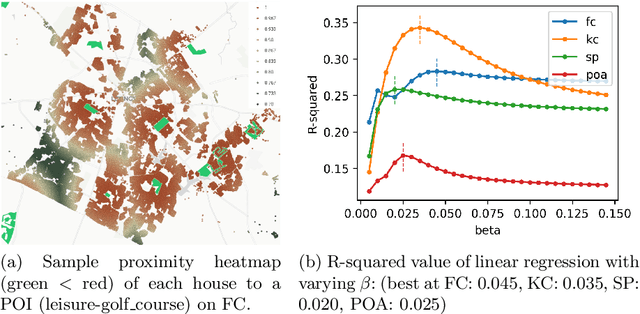
Abstract:Despite advancements in real estate appraisal methods, this study primarily focuses on two pivotal challenges. Firstly, we explore the often-underestimated impact of Points of Interest (POI) on property values, emphasizing the necessity for a comprehensive, data-driven approach to feature selection. Secondly, we integrate road-network-based Areal Embedding to enhance spatial understanding for real estate appraisal. We first propose a revised method for POI feature extraction, and discuss the impact of each POI for house price appraisal. Then we present the Areal embedding-enabled Masked Multihead Attention-based Spatial Interpolation for House Price Prediction (AMMASI) model, an improvement upon the existing ASI model, which leverages masked multi-head attention on geographic neighbor houses and similar-featured houses. Our model outperforms current baselines and also offers promising avenues for future optimization in real estate appraisal methodologies.
Enhancing Spatiotemporal Traffic Prediction through Urban Human Activity Analysis
Aug 20, 2023
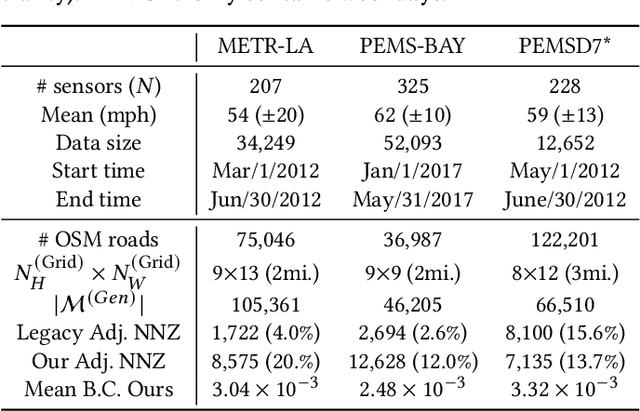

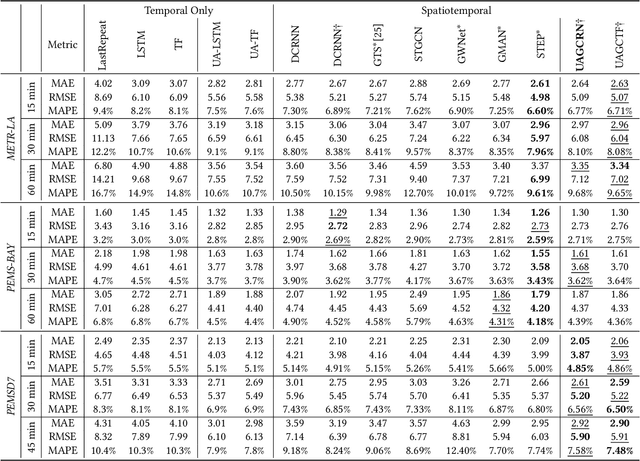
Abstract:Traffic prediction is one of the key elements to ensure the safety and convenience of citizens. Existing traffic prediction models primarily focus on deep learning architectures to capture spatial and temporal correlation. They often overlook the underlying nature of traffic. Specifically, the sensor networks in most traffic datasets do not accurately represent the actual road network exploited by vehicles, failing to provide insights into the traffic patterns in urban activities. To overcome these limitations, we propose an improved traffic prediction method based on graph convolution deep learning algorithms. We leverage human activity frequency data from National Household Travel Survey to enhance the inference capability of a causal relationship between activity and traffic patterns. Despite making minimal modifications to the conventional graph convolutional recurrent networks and graph convolutional transformer architectures, our approach achieves state-of-the-art performance without introducing excessive computational overhead.
 Add to Chrome
Add to Chrome Add to Firefox
Add to Firefox Add to Edge
Add to Edge